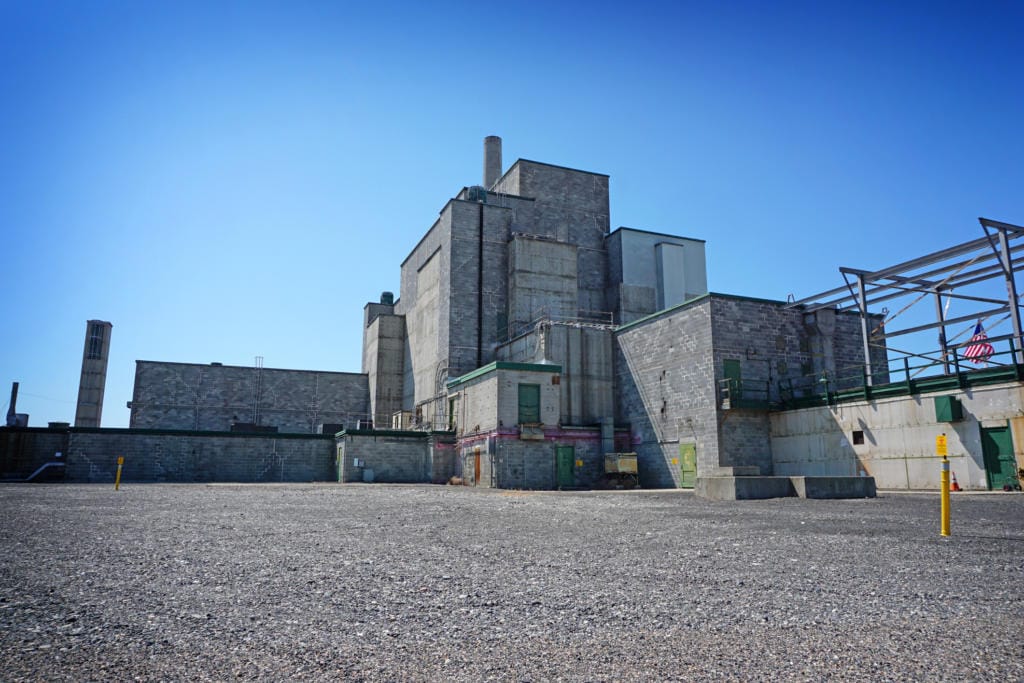RICHLAND — Hanford workers have begun emptying radioactive waste from a leak-prone underground tank — the second tank they have tackled this year.
They’ve started work on Tank AX-103, which has 104,000 gallons of waste mostly in the form of salt cake. They want to transfer as much waste as possible from the single-shell tank into one of the nuclear reservation’s sturdier double-shell tanks.
“It’s not easy to access the tanks or move this kind of waste, and it takes specialized tools and techniques that have been developed, tested and proven successful to meet this challenge,” said Ricky Bang, the Department of Energy’s Hanford tank farms program director.
Tank AX-103, built in the early 1960s with a capacity of 1 million gallons, is one of four tanks in a group called the AX Tank Farm that are the current focus of waste retrieval work.
To date the Department of Energy has completed waste retrieval from 18 of its 149 single-shell tanks, some of them built as early as the 1940s.
At least two of the tanks yet to be emptied are leaking waste into the ground below.
The Hanford nuclear reservation in Eastern Washington was used to produce two-thirds of the plutonium for the nation’s nuclear weapons program during World War II and the Cold War.
Chemically processing uranium fuel irradiated in nine Hanford reactors to remove plutonium left about 56 million gallons of radioactive and other hazardous chemical waste stored in underground tanks.
DOE has been working to empty the tanks of their solid waste — thick sludge and salt cake — for about 23 years, moving waste from single shell tanks into 27 newer double shell tanks for storage until the waste can be treated for disposal.
It plans to start treating some waste for disposal at the $17 billion Hanford vitrification plant at the end of 2023.
Earlier, as much liquid waste as possible was removed from the aging single-shell tanks to reduce the risk of leaks.
Emptying the AX tanks
Among the 18 tanks emptied so far, according to the Washington state Department of Ecology, a Hanford regulator, is one of the AX Tank Farm tanks, AX-102.
At the start of 2021 Washington River Protection Solutions began emptying a second tank in the AX Tank Farm. While retrieval on the tank has stopped, the Department of Ecology has not agreed that it is emptied to regulatory requirements.
That makes Tank AX-103 the third tank to have waste retrieved in the AX Tank Farm, with the fourth tank expected to be emptied next year.
Several years were spent installing all infrastructure to provide electrical power, ventilation, water and transfer lines before work starts to empty the 10 tanks in the adjacent A and AX Tank Farms.
Now workers have lowered equipment through narrow vertical pipes that allow access from above ground into the interior of Tank AX-103.
The equipment includes three sluicing and water cannon systems to break up and dissolve the salt cake, a central pump to remove the dissolved waste, and a camera and lighting system to guide remote operations.
“It takes a particular combination of water and pressure to create a slurry, which suspends the heavier solids in a liquid that can be pumped out and sent via transfer lines to another tank,” said Peggy Hamilton, retrievals manager for the DOE tank farm contractor.
Workers operate the equipment inserted into the tank from a nearby control trailer.
DOE had a federal court-ordered consent decree deadline for a group of tanks before July 2021 that it chose to meet by completing waste retrieval from two of the AX Tank Farm tanks.
Because of work limitations during the COVID pandemic, DOE was given extra time. The work to meet the extended deadline is expected to be met this year.




